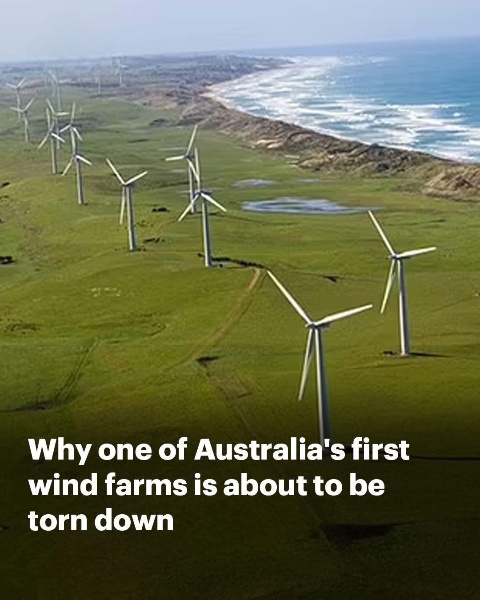One of Australia’s earliest ventures into renewable energy is coming to a close, as the Codrington Wind Farm in southwest Victoria prepares to dismantle its 14 towering turbines, marking the end of an era for the nation’s green power movement. Located near the scenic coastal town of Port Fairy, this wind farm has long been a symbol of sustainable progress, quietly harnessing wind energy from the rolling green hills that make the location almost ideal for such an operation.

Since its launch nearly 24 years ago, the Codrington Wind Farm has provided enough clean electricity to power approximately 10,000 homes each year, while preventing the release of nearly 50,000 tonnes of greenhouse gases annually. However, like all machines, wind turbines have a lifespan, and the 50-meter-high turbines at Codrington are now approaching the end of their roughly 20-year operational lives. Pacific Blue, the company that owns and operates the wind farm, has announced that it will be dismantling the turbines in a methodical, careful manner using cranes—a move that sets it apart from some more aggressive decommissioning methods, such as using controlled explosives. The choice to disassemble the turbines this way reflects a conscious effort by Pacific Blue to show leadership in not just building renewable infrastructure but also in responsibly retiring it.
According to a spokesperson from Pacific Blue who spoke with Renew Economy, the turbines will be taken down in the reverse order of how they were initially assembled, ensuring precision and safety throughout the process. This method, while more time-consuming and labor-intensive, is considered to be more environmentally friendly and more likely to gain the approval of surrounding communities. Residents in the Port Fairy region have long been familiar with the sight and sound of the wind turbines dotting the landscape, and many regard the site as a point of pride. The fact that Pacific Blue is approaching the dismantling process with care and respect has been met with appreciation, especially in an era where communities are increasingly vocal about environmental responsibility and sustainability.
The company’s hope is to become a leader in the renewable energy space “twice over”—not only by being among the first to embrace wind energy in Australia, but now by setting a new standard for how renewable infrastructure should be responsibly taken down when it reaches the end of its usable life. While some may feel nostalgic about the removal of these familiar structures, the moment also opens the door for reflection and renewal. The end of the Codrington turbines does not necessarily signal the end of wind energy in the region.
In fact, it paves the way for discussions around upgrading to newer, more efficient turbines or exploring other forms of renewable energy that could take their place. As the global energy sector continues to shift toward sustainability, decisions like these become increasingly important. The responsible retirement of renewable infrastructure plays a crucial role in the broader conversation about how we balance innovation with long-term environmental stewardship. Pacific Blue’s decision is a case study in how to retire aging assets without sacrificing the values of the green movement. Instead of simply walking away from aging equipment or opting for cheaper but more destructive methods, the company is showing what it means to follow through on the full lifecycle of renewable infrastructure. The Codrington Wind Farm may soon look very different without its signature turbines spinning in the coastal breeze, but its legacy will live on—not just in the clean energy it generated, but in the thoughtful way it’s being brought to a close. This project, once a trailblazer in Australian renewables, is again leading by example, reminding us that sustainability isn’t just about building the future—it’s also about responsibly honoring the past.





